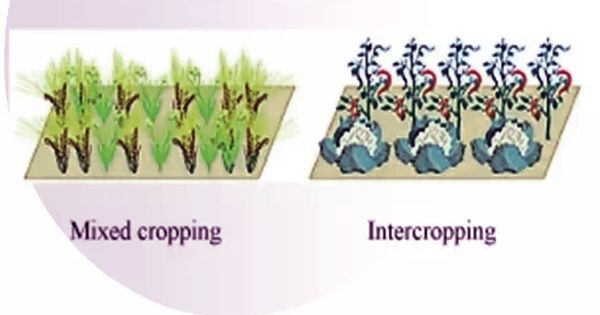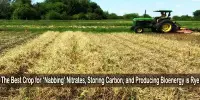Rice, wheat, vegetables, and other plants are grown on a large scale for-profit, and survival is known as a crop. Crop refers to a plant of a particular kind, grown on a large scale in a proportion of area, for commercial purposes. For growing crops, a particular pattern or system is followed. The two most commonly contrasted cropping systems are mixed cropping and intercropping.
Mixed cropping is employed to reduce the risk of crop failure due to adverse weather conditions. On the contrary, intercropping helps in increasing the productivity of the crop.
Mixed cropping implies a cropping technique in which different types of crops are cultivated together. It refers to a cropping system where two or more crops are cultivated in the same piece of land simultaneously. On the contrary, when two or more crops are cultivated simultaneously on the same piece of land, in a definite pattern, it is called intercropping. It is a cropping technique in which two or more crops are cultivated simultaneously in the same piece of land adhering to a specific row pattern in order to increase the productivity of the crops.
Difference between Mixed Cropping and Intercropping –

MIXED CROPPING
- Mixed Cropping alludes to a method of cropping in which two or more crops are grown simultaneously in the same piece of land. When two or more crops are sown and cultivated at the same time in a particular area, then this type of cropping pattern is known as mixed cropping.
- Mixed Cropping is used to mean a cropping technique, in which two or more plants are planted simultaneously, in a particular piece of land. In this process, the components of the crops are intermingled in the available space in a way, that they grow together.
- Seeds are sown in separate rows in intercropping, in a specific sequence. The seeds are combined properly and mixed in the field in the case of mixed cropping.
- This system of cropping is practiced by the farmers to avoid total crop failure, due to less rainfall. It restores soil fertility, as the products and remains of one plant assist in the growth of the other and vice versa. As a result, the overall crop yield increases.
- It aims at decreasing the risk of crop failure, due to unfavorable weather conditions. The most common combinations used in mixed cropping are wheat and gram, groundnut and sunflower, wheat and peas, etc.
INTER CROPPING
- Intercropping refers to the process of cultivating crops wherein different types of crops are cultivated together in a specified pattern. Intercropping is a method of growing crops in which two types of crops are sown and cultivated concurrently, in the same land, in a definite pattern.
- Intercropping connotes a system of sowing two or more crops at the same time in a particular piece of land, in a definite row pattern, so as to increase the productivity of crops sown. It is primarily practiced by small farmers, who depend on rainfall, for better yield.
- There are no seeds order followed in the case of mixed cropping. No such mixing is done in intercropping, before sowing them.
- This process involves a specific row pattern, i.e. 1:1, or 1:2, meaning that one row of the main crop to one or two-row of the other crops. In this process, those crops are combined, whose nutrient requirements vary with one another. It ensures optimum utilization of the nutrients supplied.
- The common combinations used for intercropping purposes are soybean and maize, finger millet, and cowpea.
Information Source:
















